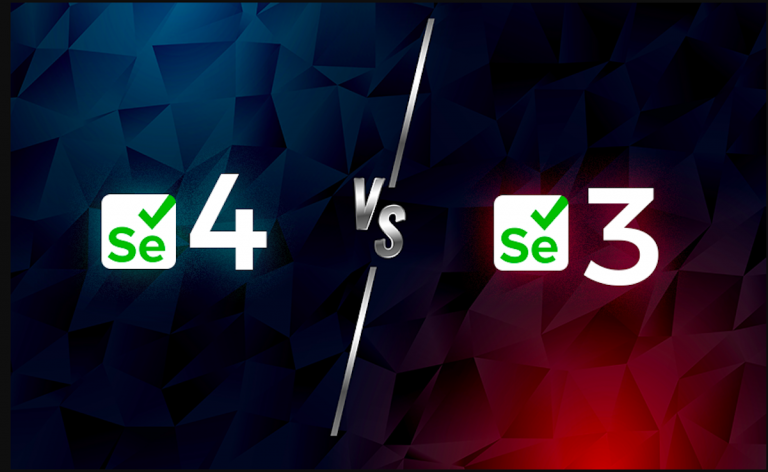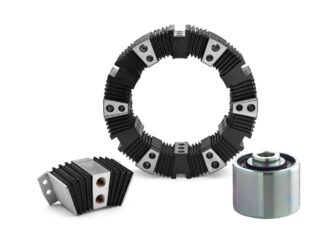A brief explanation of what this transition entails is necessary for individuals interested in using the Alpha version of Selenium 4.

Topics covered
Post-release of Selenium 4, the development and testing communities are buzzing for its comparison with Selenium 3. It is natural for developers and testers to transition to the latest version since it offers a slew of new features and updates that provide genuine benefits. A brief explanation of what this transition entails is necessary for individuals interested in using the Alpha version of Selenium 4.
Since Selenium 4 hosts several new features and improvements over its predecessor, it has gained immense popularity in the market. In contrast, Selenium users and test automation enthusiasts were not initially aware of the ‘final’ release of Selenium 4. After its release on October 13, 2021, they began exploring and experimenting with the Alpha version of Selenium 4.
Comparison Between Selenium 3 and Selenium 4
Standardization Of Selenium WebDriver By The W3C
With Selenium 3, test code and browsers communicated using the JSON Wire Protocol, eliminating the need to encode and decode API requests using the W3C protocol. A version of Selenium 4 will deprecate the JSON Wire Protocol.
Implementing the W3C standard is Selenium 4’s WebDriver. The most common browser drives (ChromeDriver, geckodriver) do the same, so WebDriver can address the browser and doesn’t need to rely on the JSON Wire Protocol. Assuming Selenium-based tests are stable cross-browser, they should be more reliable than previous architectures.
To remove native support for Opera and PhantomJS, WebDriver implementations for these browsers are no longer being developed.
Selenium 4 IDE With Enhanced Capabilities
As of Selenium 3 and earlier Selenium versions, the Selenium IDE was only available as a Firefox extension.
Selenium 4 has been made available as an extension for many browsers, including Chrome. As an extension or plug-in for MS Edge, it is also expected to become available soon. With a cloud of Selenium Grid like the one provided by BrowserStack, SIDE Runner can run cross-browser tests in parallel.
In addition, Selenium 4’s IDE offers an Export feature that lets users export recorded tests as code in languages such as C#, Python, Java, JavaScript, .NET, etc.
Grid Optimization For Selenium
When performing automation testing with Selenium 3 and 4, someone must start each Hub and Node separately. The router: session map, distributor supported the following processes.
A single jar file houses both the Hub and Node in Selenium 4. Both components are activated as soon as the server is launched. Routers, sessions maps, distributors, and nodes are among the processes supported. You can also use Docker with this app.
With Selenium 4 Grid, IPV6 addresses can be used, and HTTPS can be used to interact with the Grid. AWS and Azure, as well as DevOps-friendly tools, are also supported.
Support for Chrome DevTools
Selenium 4 supports Chrome DevTools Protocol natively through its DevTools interface, unlike Selenium 3. The Chrome Development Properties property allows testers to use Chrome Development Properties such as Fetch, Network, Profiler, Performance, Application Cache. To discover anomalies faster and edit code without affecting it (on the fly), Chrome DevTools can help testers and developers.
Because of these APIs, Selenium 4 can also replicate geographical locations and network strengths, thereby enabling QAs to run geolocation testing websites in throttled network conditions (2G, 3G, 4G, Edge).
In Selenium 4, Chrome DevTools Protocol (CDP) is natively supported through the DevTools interface. With the Chrome DevTools interface’s APIs, diagnosing issues and editing web pages on the fly would be much easier.
Selenium 4 will emulate geolocation and network conditions more easily with the native support of CDP. Selenium 4 allows users to test web products for global audiences by simulating geographic location in the code.
Relative Locators
New relative locators in Selenium 4 Alpha (above, below, toRightOf, toLeftOf, and near) help locate web elements relative to the DOM. This detailed overview of relative locator features in Selenium 4 could help you get started with this feature only available in Selenium 4.
In Selenium 3, testers used the findElement command to locate elements adjacent to each other, such as right or left or above or below another element.
The ability to do this has been implemented in Selenium 4. The Relative Locator provides testers with the ability to locate web elements relative to another element in the Document Object Model.
- Taking screenshots of specific WebElements is possible using TakeElementScreenshot.
- Introduction of the newWindow API facilitates the creation of Windows (WindowType.WINDOW) and Tabs (WindowType.TAB).
- The debugging process has been optimized and accelerated. Selenium 4 is not only packed with these significant enhancements, but it also includes:
When comparing Selenium 3 and Selenium 4, the overall experience with Selenium 4 (Alpha) is significantly better than Selenium 3. Selenium 4 offers you plenty of unique features, one of the primary reasons for downloading Selenium 4 (Alpha) and getting your hands on it.
Possibility To Achieve Targeted Results
QAs could specify basic requirements for Selenium 3 tests, such as operating systems, browser combinations, and browser versions, using DesiredCapabilities.
In Selenium 4, a DesiredCapability has been replaced by an Option. When QAs use the Driver class, they must create an Options class, specify test requirements, and pass the object to the constructor of the Driver class.
- Previously, the constructors of the driver accepted Capabilities objects. Now they accept options.
- A new version of ChromeDriver (ChromeOptions) replaces ChromeDriver(Capabilities).
- It is now FirefoxDriver(FirefoxOptions) instead of FirefoxDriver(Capabilities).
- We have replaced the InternetExplorerDriver(Capabilities) with the InternetExplorerDriver(InternetExplorerOptions).
A Class Of Actions
To replace classes previously found in the package org.openqa.selenium.interactions, several new methods have been added to the Actions class:
- With Actions, moveToElement(onElement).click() replaces click(WebElement).click(WebElement). This is known as click(WebElement).
- MoveToElement(onElement).clickAndHold() has been replaced with clickAndHold(WebElement). Useful for clicking on an element while holding the mouse button down.
- A new context-click method, contextClick(WebElement), has been added in place of moveToElement(onElement).contextClick(). The element in question must be selected to right-click.
- It has been replaced with doubleClick(WebElement).MoveToElement(element).doubleClick(). A double click is performed on an element using this method.
- org.openqa.selenium.interactions.ButtonReleaseAction originally included a release() method. An action now includes this method. In the current cursor location, it is used to release a depressed left mouse click.
Conclusion
Developers and testers can use the LambdaTest automation testing package to generate desired Selenium 4 compatibilities for a flawless and effective testing environment.
The package of newly added features in Selenium 4 makes it a worthy upgrade over Selenium 3, including relative locators, Chrome DevTools, and an improved Selenium Grid. We discussed how to upgrade from Selenium 3 to Selenium 4 for Java language bindings in this Selenium 4 tutorial. If your project uses Maven, upgrading to Selenium 4 is just a matter of adding the Selenium 4 dependency to your pom.xml file.
Selenium 4 is also easy to upgrade for languages like Python, C#, PHP, Ruby, and JavaScript that Selenium supports. When comparing Selenium 3 to Selenium 4, the latter (still in the Alpha stage) has an immense advantage over its predecessor.




